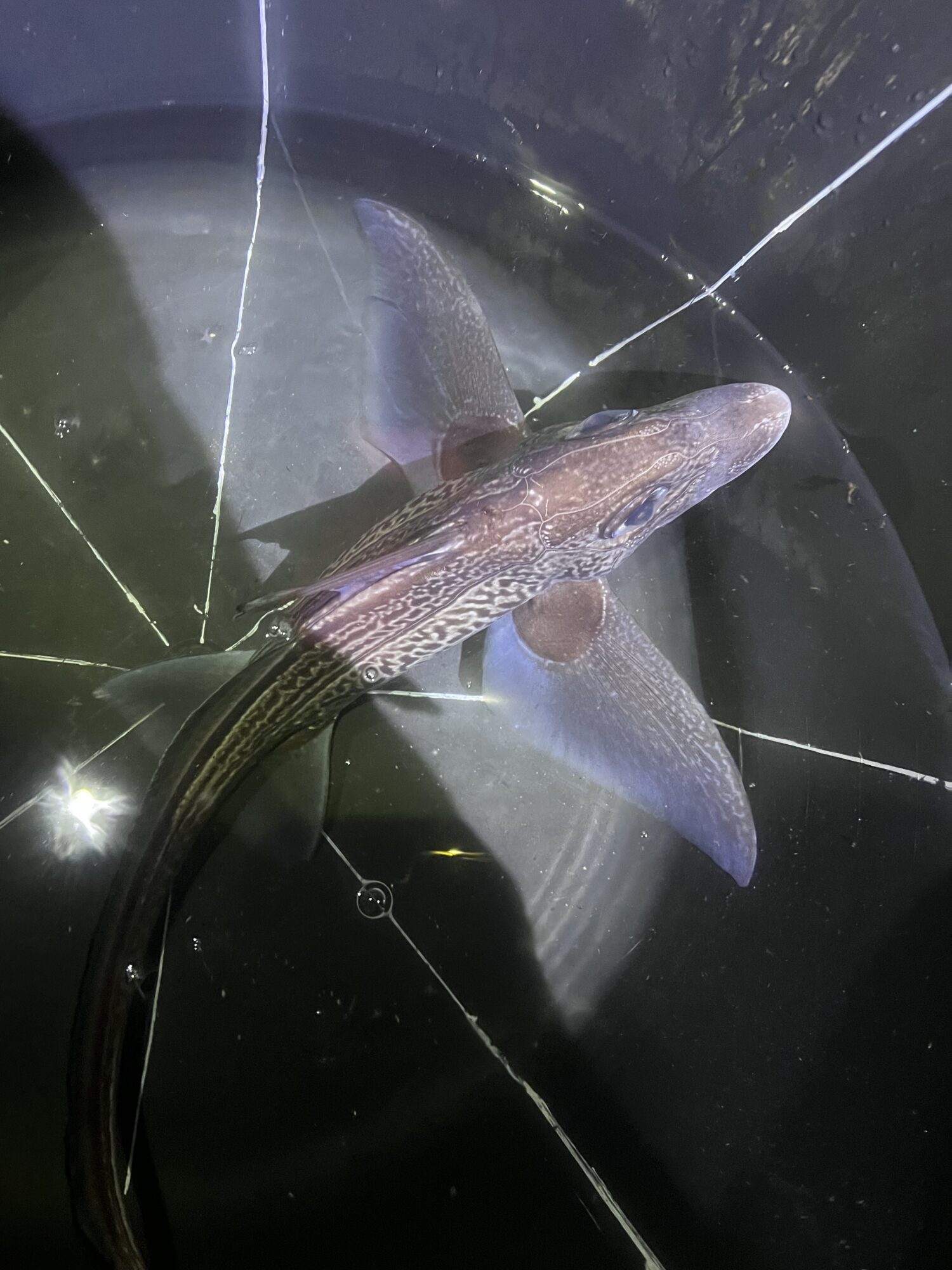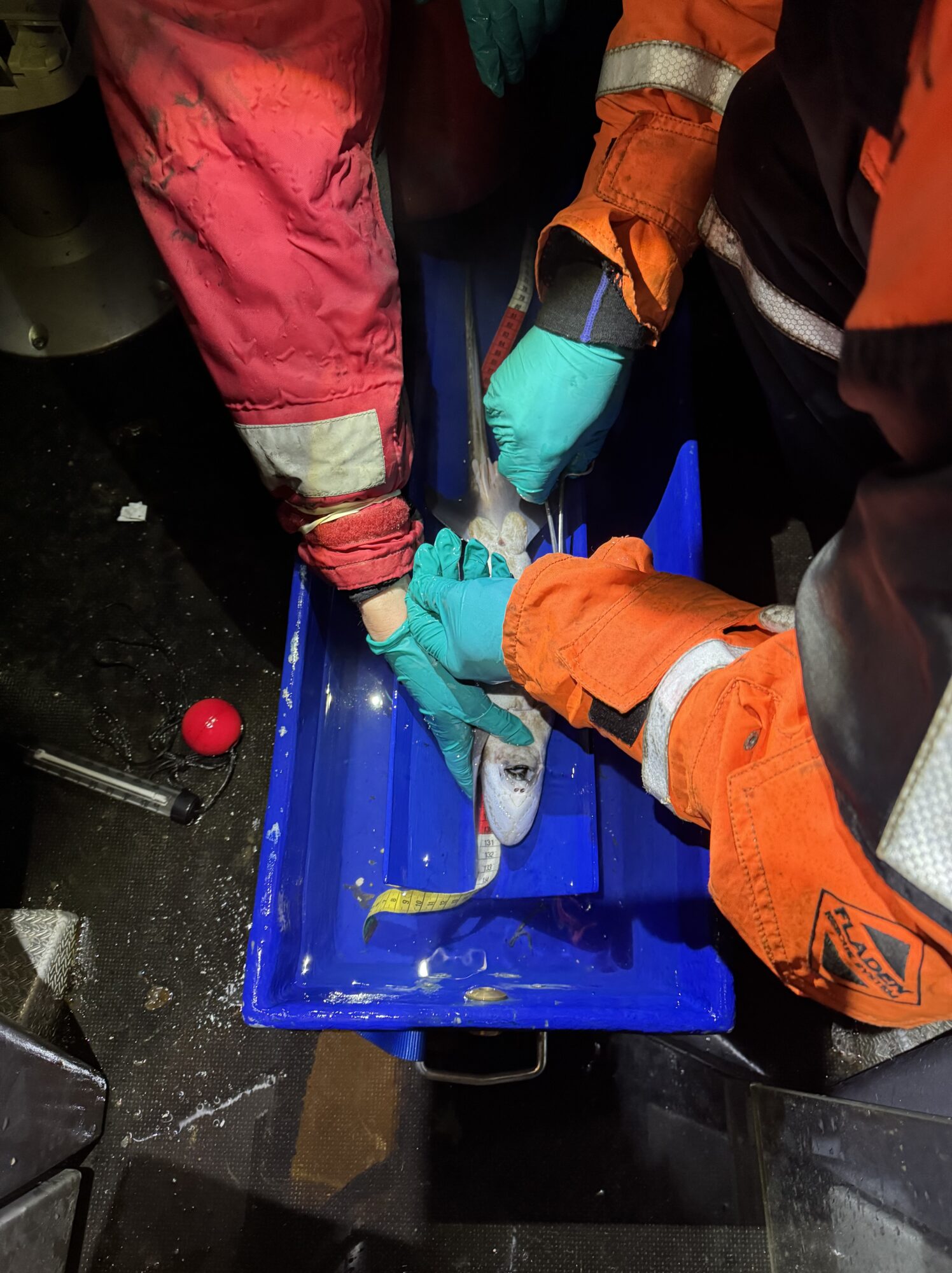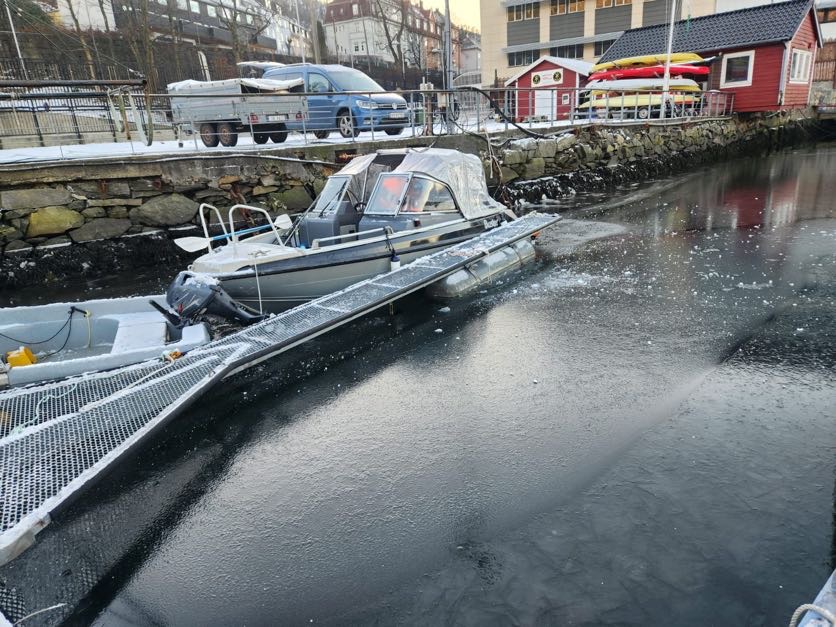Breaking the ice: capturing and tagging the first chimaera monstrosa
Just outside the city centre of Bergen, the marine harbour of the Norwegian west coast, an elusive, mysterious deep-water species can be observed by scuba divers at around 20-30 meters depth. The ghost shark (Chimaera monstrosa), also known as rabbit fish, rat fish, or just chimaera, usually occupy great depths of several hundred meters, but for some reason they move much closer to the surface in this Norwegian fjord area. But why?

The first chimaera that was captured and tagged with an acoustic tag. Photo © Lotte S Dahlmo
On our first attempt at trying to capture chimaera, we went out on a cold winter evening where I, as the PI, had a hope of catching one chimaera, and we could call it a successful trip. We drove the boat to the first location where we deployed a baited longline at around 20-40 m depth. While waiting to check the longline, we drove to a second location to try active fishing with bait, however, this did unfortunately not result in any chimaera. After approximately 1.5 hours of soaking time, we started pulling up the longline, but none of the baited hooks had caught a chimaera, until we reached one of the last hooks where a beautiful and big female chimaera with total length of 79 cm was hooked. We managed to catch and tag a chimaera on our first attempt!

Tagging of a chimaera. The chimaera is laying in water during tagging with saltwater being poured over its mouth and gills. Photo © Tora Aleksandersen
Since that first day, we have captured and tagged additional four chimaeras, two males and two females. The five chimaeras were internally tagged with acoustic tags that transmit signals which will be detected and stored by stationary passive receivers deployed in the fjord system when the individuals are within range. We are very excited to go back in field to do our best to capture and tag more individuals, and we can almost not wait to download the data from the receivers.

While visiting NORCE LFI for the LOST project meeting in February 2025, Dr. Dean Grubbs joined field work where he was met with the problem of an ice-covered bay and a boat that was stuck. Photo © Dean Grubbs
And lastly, it is important to mention that scuba divers report that they observe chimaeras at shallow depths mostly during winter and in the evening when the sun has set, which can lead to some obstacles working in a Norwegian fjord. On a few of the trips we had to literally break the ice to get the boat out before we could drive to the fishing locations. And with both short days and cold temperatures, the field work can be slightly less appealing than working in warm and sunny weather, but at least it has been very rewarding to capture and tag several individuals of this beautiful and fascinating chimaera species, which will contribute to fill knowledge gaps on their movement and behaviour.
